Virtualizing Fiber in the DWDM C- and O-Bands: Empowering Carriers and Enterprises with Cost-Effective Solutions
In today's rapidly expanding IT landscape, many organizations are faced with the challenge of fiber exhaust. Installing additional fiber infrastructure is often impractical due to permitting roadblocks, construction delays, and financial constraints. To address these issues, Smartoptics has developed innovative solutions for virtualizing fiber in the DWDM C- and O-Bands (1550nm and 1310nm), enabling carriers and enterprises to overcome limitations and achieve enhanced network performance. This technical article explores the benefits and implementation of Smartoptics' O-Band optics and systems, offering cost-effective solutions to meet growing network demands.
The Challenge
As networks experience exponential growth, organizations require increased bandwidth and fiber connectivity. However, installing additional fiber is often hindered by permitting challenges and substantial financial investments. Moreover, introducing new active components can lead to security concerns, personnel training requirements, and power and space limitations. To address these challenges, organizations are seeking alternative solutions to maximize their existing fiber infrastructure.
The Solution
Smartoptics' O-Band virtualization solution provides a comprehensive approach to address fiber exhaust challenges. By leveraging the DWDM C- and O-Bands, organizations can deliver multiple, independent, secure, and cost-effective services over a single fiber pair. The implementation involves utilizing a 1310/1550 filter to isolate the DWDM C and O-Bands. A 40-channel passive multiplexer is then introduced in the C-Band (1550nm range), enabling the transmission of up to 40 channels of 1GE to 400GE services, while up to 16 100GE channels can be supported in the O-Band. Alternatively, either of these solutions can be offered independently on dark fiber to maximize distance.
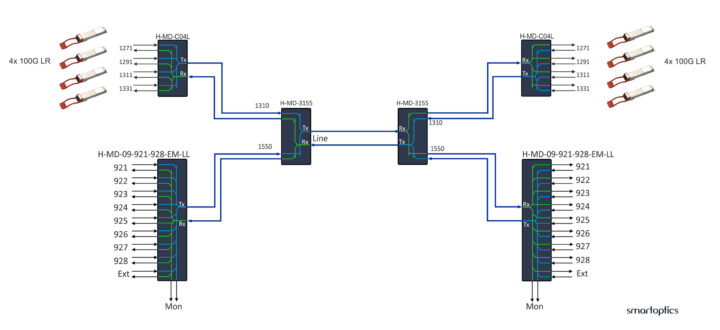
Diving Deeper: Introducing the O-Band
The O-Band represents a breakthrough in optical and filter technology, making use of the 1310 nm fiber spectrum for cost-effective 100G DWDM solutions. O-Band optics offer up to 16 x 100G DWDM wavelengths, providing organizations with flexibility and scalability. For the most cost-effective 100GE services, a 4-channel CWDM filter is incorporated in the O-Band, facilitating the delivery of four independent 100GE services. The key advantage lies in the seamless integration of O-Band optics with existing equipment, eliminating the need for additional transponders or muxponders. This results in a highly cost-effective, space-efficient, and power-saving solution for virtualizing fiber. This virtualization solution empowers organizations to utilize a single pair of fiber to deliver up to 56 independent services, optimizing fiber resources for future scalability.
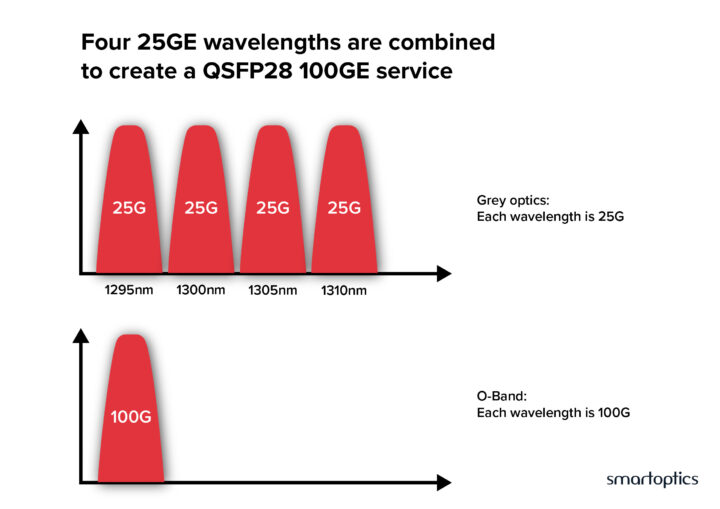
O-Band optics offer significant reach, covering distances of up to 25 km. This makes them suitable for various applications, including data centers, campuses, and access networks. O-Band optics are priced significantly lower than their coherent counterparts, making them an attractive choice for organizations seeking economical solutions.
O-Band single lane 100G optics can be combined with 4 lane 400G grey optics to provide extremely cost-effective aggregation. All 100G optics can be on a single wavelength when client fiber is available to enable simple operations and spare part handling. CWDM filters can be added along with CWDM 100G optics to multiplex up to 4 x 100G services over a single client fiber as needed. Utilizing the Smartoptics DCP-404 or DCP-1203, the network operator can choose between inexpensive 400G grey optics for intra-datacenter fiber transport or metro distances up to 40 km, or coherent 400G optics for regional ROADM networks.
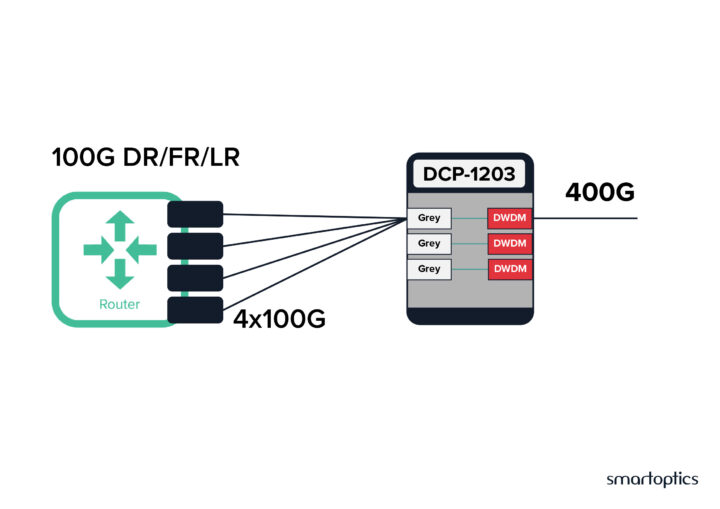
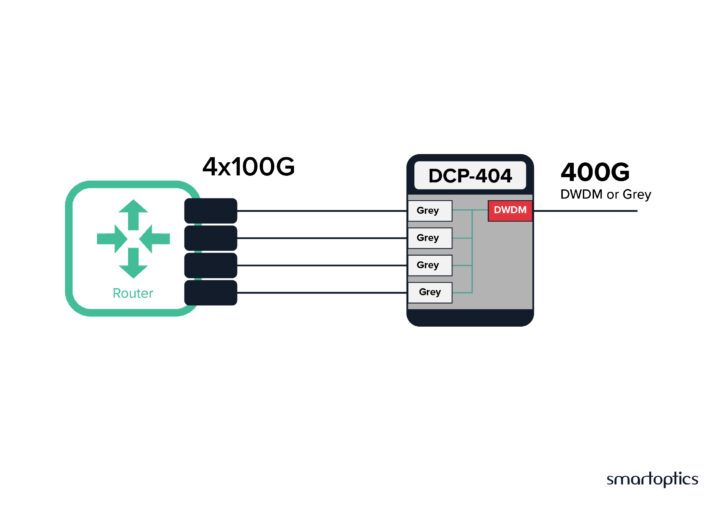
Conclusion
Smartoptics' virtualization solutions in the DWDM C and O-Bands offer carriers and enterprises a cost-effective approach to overcome fiber exhaust limitations and optimize existing fiber infrastructure. By leveraging Smartoptics' advanced technologies, organizations can deliver multiple, independent, secure, and cost-effective services over a single fiber pair, ranging from 1GE to 400GE. With the ability to maximize their network resources, organizations can meet the growing demands of their networks efficiently and effectively.
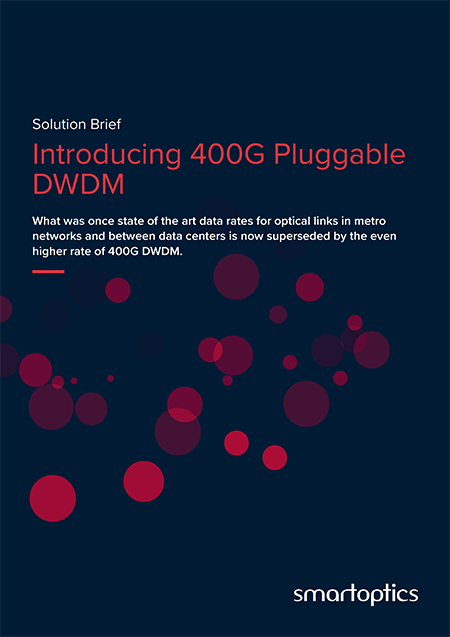
Introducing 400G pluggable DWDM
Download our solution brief and learn more about the 400G DWDM solution
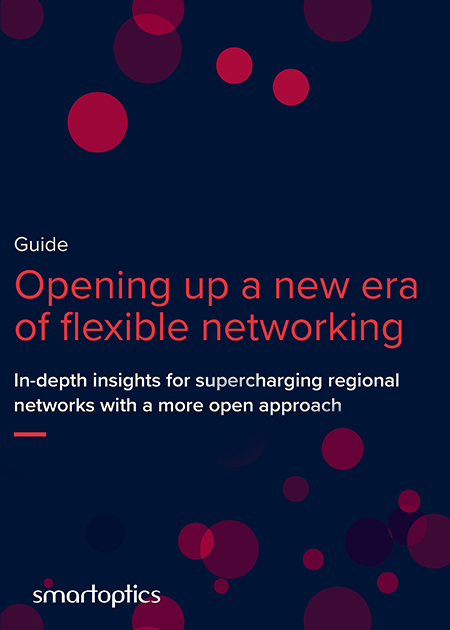
The guide for a new era of flexible networking
Download our guide to discover a new path to flexible networking
Related articles

Why hundreds of enterprises with mission-critical workloads choose Smartoptics for Brocade networking

Four reasons to choose Smartoptics for Brocade SAN DCI
